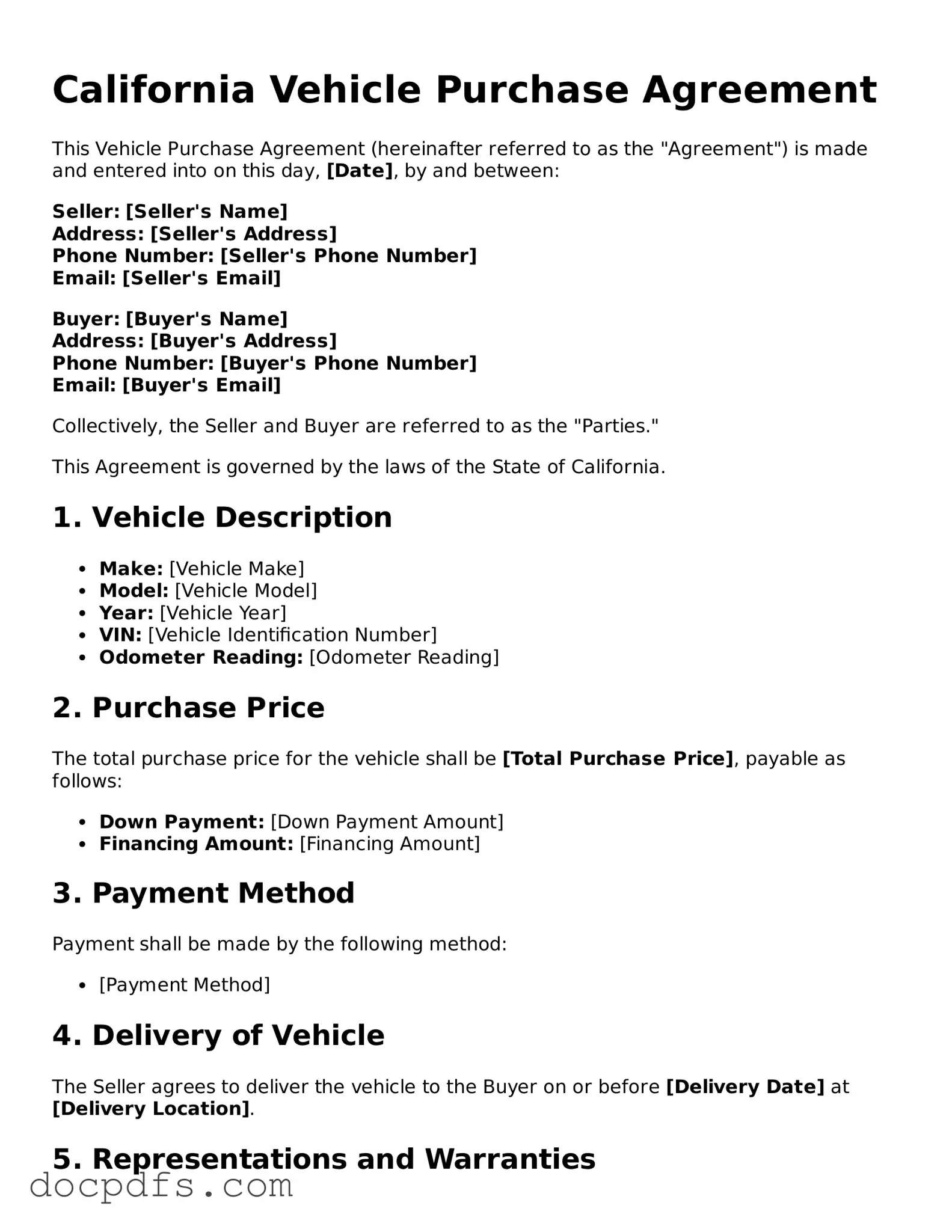What is a California Vehicle Purchase Agreement?
A California Vehicle Purchase Agreement is a legal document that outlines the terms and conditions of a vehicle sale between a buyer and a seller. This agreement details important information such as the vehicle’s make, model, year, VIN (Vehicle Identification Number), purchase price, and any warranties or guarantees associated with the sale. It serves to protect both parties by clearly defining their rights and responsibilities.
Why is a Vehicle Purchase Agreement important?
This agreement is crucial for several reasons. First, it provides a written record of the transaction, which can help resolve disputes if they arise later. Second, it ensures that both parties understand the terms of the sale, reducing the risk of misunderstandings. Lastly, having a formal agreement can assist in the registration process and may be required by lenders if financing is involved.
What should be included in the Vehicle Purchase Agreement?
A well-crafted Vehicle Purchase Agreement should include:
-
The full names and addresses of both the buyer and seller.
-
Details about the vehicle, including make, model, year, and VIN.
-
The purchase price and payment method.
-
Any warranties or guarantees provided by the seller.
-
Disclosure of any known defects or issues with the vehicle.
-
Signatures of both parties to indicate agreement to the terms.
Can I use a Vehicle Purchase Agreement for both new and used cars?
Yes, you can use a Vehicle Purchase Agreement for both new and used cars. The key is to ensure that all relevant details about the vehicle and the sale are accurately documented. For used cars, it’s especially important to note any existing issues or conditions that may affect the vehicle's value or safety.
Is a Vehicle Purchase Agreement legally binding?
Yes, once both parties sign the Vehicle Purchase Agreement, it becomes a legally binding contract. This means that both the buyer and seller are obligated to adhere to the terms outlined in the agreement. If either party fails to fulfill their obligations, the other party may have legal recourse to seek remedies.
Do I need a lawyer to create a Vehicle Purchase Agreement?
While it’s not mandatory to hire a lawyer to create a Vehicle Purchase Agreement, it can be beneficial, especially for complex transactions. Many people successfully use templates or standard forms available online. However, if you have specific concerns or unique circumstances, consulting with a legal professional can provide peace of mind and ensure that your agreement is comprehensive and enforceable.
What should I do if I encounter issues after signing the agreement?
If you encounter issues after signing the Vehicle Purchase Agreement, the first step is to communicate with the other party. Often, problems can be resolved through discussion. If that doesn’t work, review the terms of the agreement to determine your rights. Depending on the situation, you may need to seek legal advice or consider mediation to resolve the dispute.
